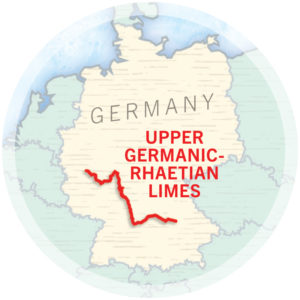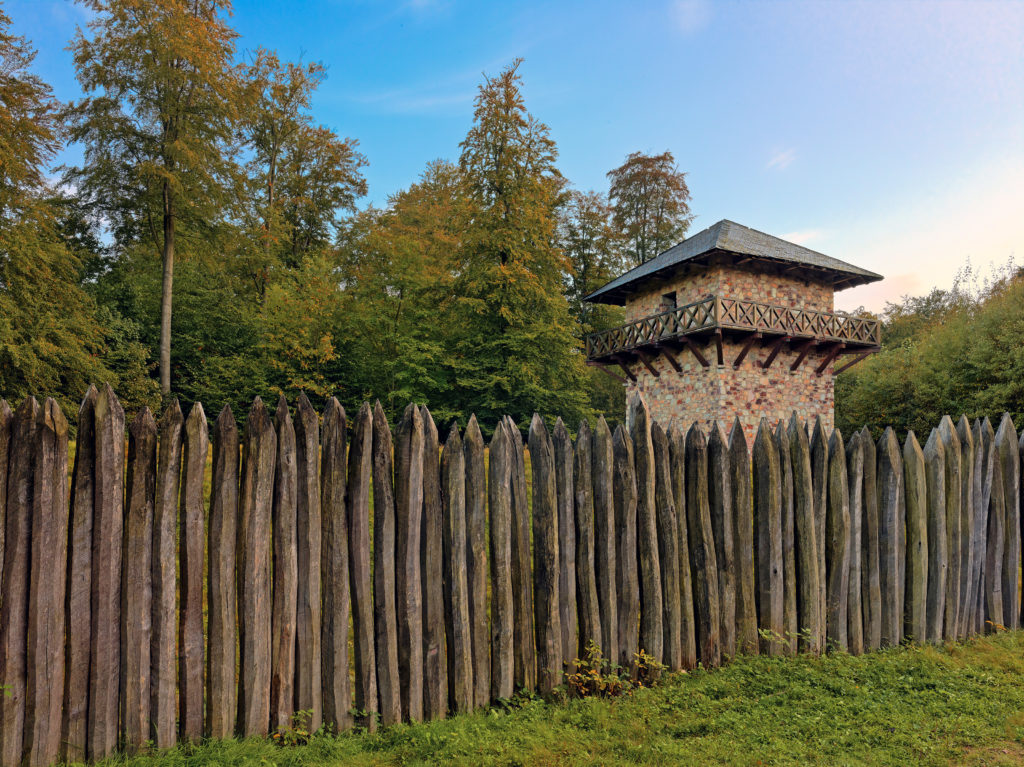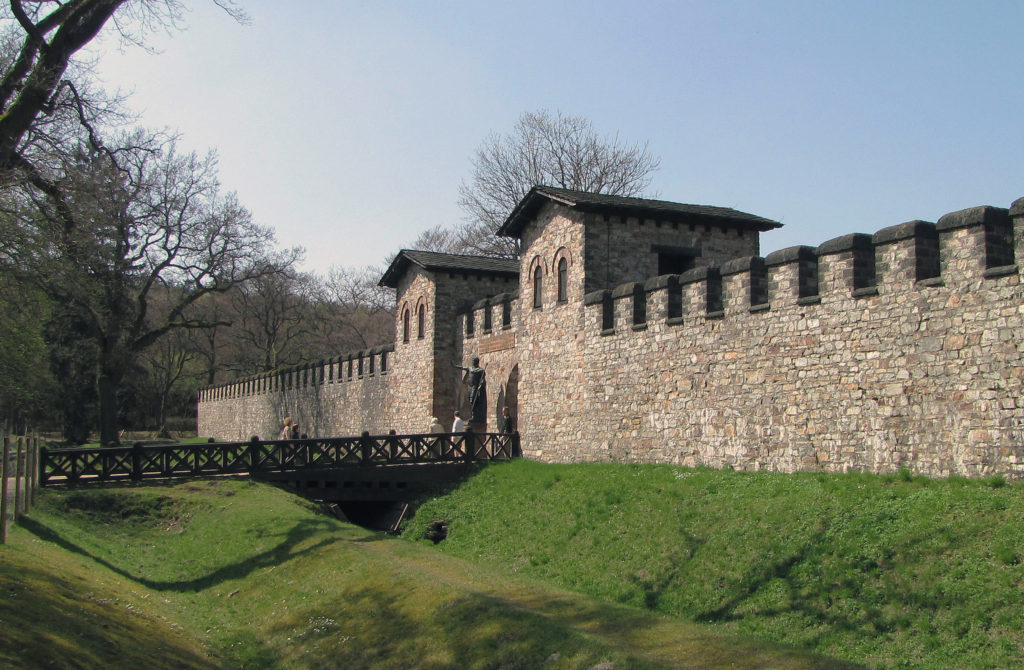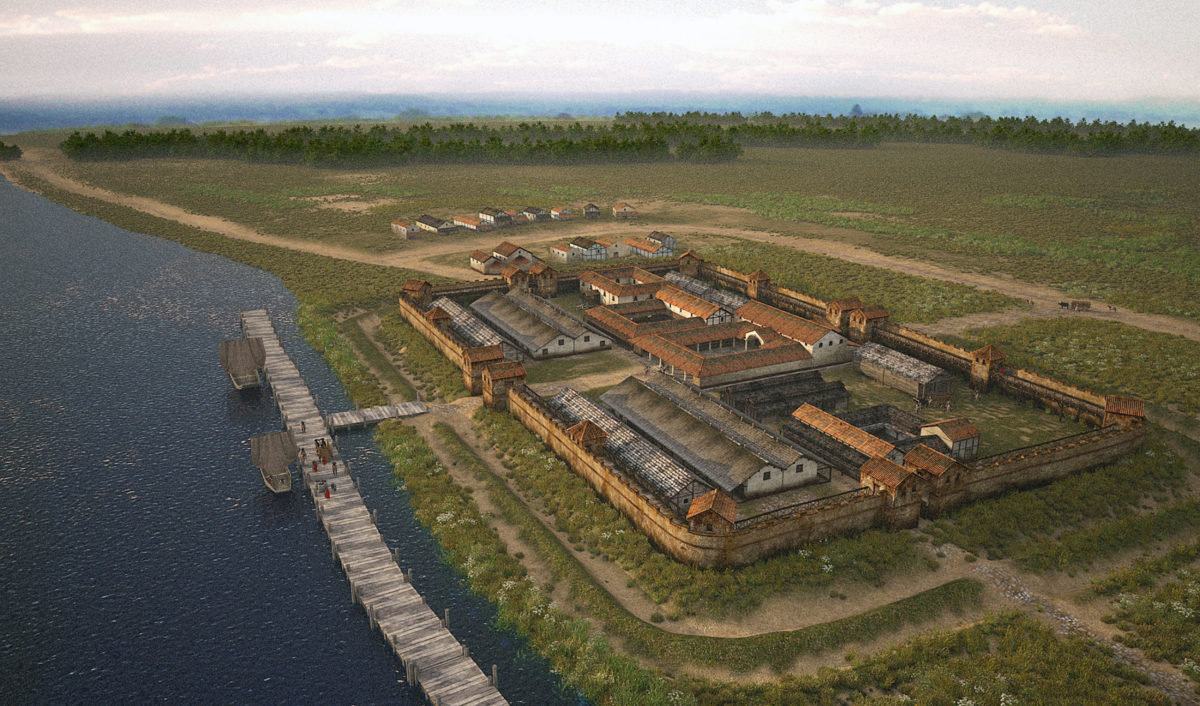The year AD 9 did not go well for the Roman empire. Three legions, six auxiliary cohorts and attached cavalry—roughly 20,000 troops—under Publius Quinctilius Varus sought to extend Roman control deep into Germany. In the Teutoburg Forest, near present-day Osnabrück, allied Germanic tribes under Arminius ambushed and annihilated the legions. The empire struck back hard between AD 14 and 16. Operating from bases west of the Rhine River, legions under Germanicus Julius Caesar, a nephew of Emperor Tiberius, waged three successful campaigns against the Germanic tribes. But despite various follow-on Roman incursions into Germany, the east-west border of the empire remained the Rhine, the north-south border the Danube, effectively containing most of Germany.

In AD 83 the Romans advanced in force back into the Rhine-Danube corner of southwest Germany, ultimately building a fortified border that followed natural contours from just north of Koblenz on the Rhine to just shy of Regensburg on the Danube. Known today as the Upper Germanic-Rhaetian Limes—limes (pronounced “Lee-mus”) being Latin for “boundary line”—the defensive work was similar to Hadrian’s Wall in Britain but more than four times as long. Running 341 miles, the limes boasted 120 forts and 900 interspersed watchtowers with controlled access gates at various points.
The second century Roman army comprised some 400,000 troops. The 170,000 troops in the legions were Roman citizens; the 230,000 troops in the auxiliary cohorts were not. The limes was manned entirely by auxiliaries. Each fort on the line was garrisoned by a cohort of about 500 men, while some cohorts had 1,000. Cavalry patrolled between the forts. The strategic reserve comprised three legions garrisoned behind the two big rivers—Legio XXII Primigenia at Mogontiacum (present-day Mainz), Legio VIII Augusta at Argentoratum (Strasbourg) and Legio III Italica at Castra Regina (Regensburg).

Originally, the limes was intended to regulate commercial traffic with Germany and provide observation points and bases for long-range reconnaissance patrols into the region. By the third century, however, the legions had fought a number of significant military actions along the boundary. In 213 Emperor Caracalla launched a campaign against the Alemanni, allied Germanic tribes north of the limes. The departure portal for the expedition was the monumental Dalkingen Gate, completed that same year. In 233 the Alemanni launched a series of major attacks against various sections of the limes, resulting in the destruction of Dalkingen Gate. In 234–235 Emperor Severus Alexander launched a punitive campaign against the Germans, while from 240 to 250 the Alemanni launched constant raids against the limes. The Romans finally abandoned the limes in 260 and pulled back to the Rhine and the Danube. The German tribes followed, especially the Alemanni, many of whose descendants live in modern-day Baden.

Not until the late 19th century did historians and archeologists start paying serious attention to the ancient fortification. As recently as 40 years ago there wasn’t much to see, but things have changed substantially since then. In 2005 the Upper Germanic-Rhaetian Limes was designated a UNESCO World Heritage Site. Since then, archeological activity has been nonstop. Under the supervision of the German Limes Commission, it has grown into the largest archeological monument in Europe, its footprint hosting some 85 museums and archeological sites. Some of the fort excavations are extensive, and watchtowers have been reconstructed at various points. Most of the sites have information signs in German with English translations. Two museums in particular stand out.
Adjacent to the museum in Osterbruken is an excavated Roman bath. Nearby Kastell Osterbruken, featuring partially excavated Roman ruins and a reconstructed watchtower, was the encampment of the 500-man Cohors III Aquitanorum. The museum in Aalen is the largest on the German Limes Road. Adjacent is partially excavated Kastell Aalen, which hosted the largest Roman cavalry garrison north of the Alps. The 1,000-man Ala II Flavia was not in the direct chain of command for control of the limes. Rather, its mission was communications and long-range reconnaissance patrols into German territory. The prefect of Ala II Flavia answered directly to the emperor.
Such stories are part of the rich historic tapestry of the limes, any museum or archeological site of which is well worth a full-day visit.






